Track Categories
The track category is the heading under which your abstract will be reviewed and later published in the conference printed matters if accepted. During the submission process, you will be asked to select one track category for your abstract.
Plants form the basis of most food chains on the planet. To pass on their genes, plants must find mates, avoid being eaten and compete for resources in an ever-changing environment — all while being rooted to the spot. They have evolved a myriad of strategies to deal with these environmental challenges.
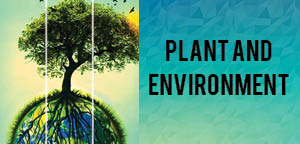
- Track 1-1Botany plant ecology
- Track 1-2Components of Plant and forest ecology
- Track 1-3Advanced plant and Forest ecology
- Track 1-4Application of plant and forest ecology
Transgenes appear to be particularly sensitive to epigenetic variation which can lead to transgene silencing, i.e. the complete or partial inactivation of transgene expression. Plants are ideal model systems to study the influence of changing environmental conditions on epigenetic patterns. We are especially interested to understand how certain genomic regions become targets for epigenetic modification and how environmental stress affects epigenetic gene regulation. Our applied work investigates how transgene silencing can be prevented and how epigenetic variation can be exploited for novel breeding strategies.
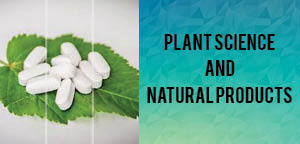
- Track 2-1Plant Protection
- Track 2-2Extracting ingredients for cosmetics using green technologies
- Track 2-3Sustainable business practices
- Track 2-4Natural replacements for petrochemical ingredients
- Track 2-5Chitosan as a basic for personal care products
Plant Science ranges from creating atomic systems for the hereditary building to biological research in the field of plant science. At last the common items needs to add to principal learning of fundamental natural procedures identified with improvement and wellbeing and the manageable creation of more solid sustenance’s, blossoms and high-esteem bio-based items.

- Track 3-1Plant Science Research
- Track 3-2Plant Cell
- Track 3-3Plant Protection
- Track 3-4Extracting ingredients for cosmetics using green technologies
- Track 3-5Plant Science business practices
- Track 3-6Natural replacements for petrochemical ingredients
- Track 3-7Agronomy and Crop Sciences
The importance of plants has been concluded by scholars since ancient period. Apart from the innumerable social benefits, much strength has been given to the plants of medicinal value. Majority of the population in developing countries assume on traditional system of medicine for their primary health care. Due to this increasing trend towards use of different system of medicine, natural medicinal plant resource in this world is under enormous pressure. Several Institution/ Organization/ Universities and Industries across the world have been steady in research and documentation of various conditions of these medicinal plants to frame a system for their preserving. In this way numerous research papers on each medicinal plant covering vast subject areas like Botany, Chemistry, Pharmacology, Pharmacy etc. are available. This will help the scientific community to keep themselves restore with the research and development work being implemented for a medicinal plant. This researcher will also be a source of favorable information for students, teachers, practitioners all those who are involved in their propagation etc.
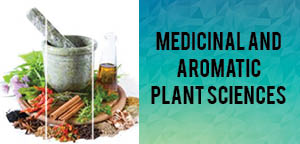
- Track 4-1Ornamental plants and bioactive compounds
- Track 4-2Olive Bioactive: Applications and Prospects
- Track 4-3Phytochemistry Experts Meeting
- Track 4-4Drug discovery from natural sources and Herbal Medicines
- Track 4-5Natural products in plant medicine
Phytotomy is the general term for the study of the internal structure of plants. Originally it included plant morphology, the description of the physical form and external structure of plants. Plants are the living, multicellular, being an organism that belongs to the dominion Plantae. There square measure over 3000,000 species of plants. Plants play a key role within the history of life on planet earth. Plants are the most accountable for the addition of element gas to the atmosphere. they are the sole supply of food for both animals and humans. They are the primary environment for many alternative organisms. A plant resides that turn out their food by chemical process. Plants provide shelter, safety, place, food for animals.
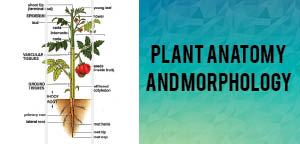
- Track 5-1Primary growth of plant
- Track 5-2Comparative Morphology
- Track 5-3Adventitious Root Formation
Humankind has affected our planet in many ways. In the past few centuries the changes in society and the "Biodiversity" is the full complexity and variety of life, at all scales, from genetic diversity, up to species and even ecosystem diversity. So, we use the term "biodiversity conservation" to refer to attempts to conserve and any parts of this natural diversity. Plant diversity is a major plant of total biodiversity - just think of the richness of tropical rain forests -.it forms the basis of all food webs and underpins the functioning of all ecosystems. So, plant conservation is an essential component of efforts for biodiversity conservation. As plants are at risk of extinction, in all parts of the world, their conservation is a priority.
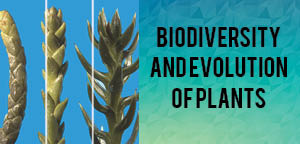
- Track 6-1Plant Ecology
- Track 6-2Biodiversity and Environmental Sciences
- Track 6-3Development and Economical Agribusiness
The science that arrangements with the investigation of infections of plants, their improvement and control are called Plant Pathology. Plant Pathology is categorized as the examination of the lifetime procedures and environmental circumstances that cause infection in plants, the arrangements comprehensive which this materializes, the influences between these causal specialists and the plant (impacts on plant development, yield and quality), and the techniques for overseeing or controlling plant sickness. Plant infections are caused by biotic specialists like organisms, microorganisms, actinomycetes, Mycoplasma, infections, nematodes, and blooming parasites or by abiotic like troublesome ecological conditions or nourishing inadequacies. Investigation of plant pathology includes the study of Microbiology, Mycology, Nematology, protozoology, phycology, environmental mechanisms.
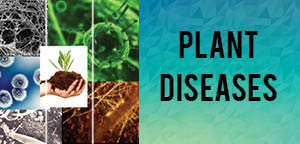
- Track 7-1Insect Plant Interactions
- Track 7-2Microbial Genomics
- Track 7-3Plant Environment Interaction
- Track 7-4Fungal Plant Interaction
- Track 7-5Nutrition Improvement
- Track 7-6Plant Immune Response
- Track 7-7Plant Science
Plant Nutritious Genomics recoils a summary of plant appropriate genomics, which remains categorized as the relationship between a plant's genome and its motivating possessions. The astute assurance and rising of varieties of items will accept a gigantic part in meeting these objectives, and advances in plant healthy genomics will allow the greatest limit of yield decision and repeating systems to be made sense of it. Understanding plant sustenance and applying this learning is critical to growing product age to meet creating demands for sustenance. Genotypic approaches, in perspective of collect assurance and recreating have starting late benefit by mechanical advances, including the satisfaction of plant genome sequencing wanders.

- Track 8-1Green nanotechnology
- Track 8-2Agriculture Nano toxicology
- Track 8-3Uptake and Translocation of Nanoparticles in plants
- Track 8-4Vaccines given to plants for a healthy vegetation
Plant science is a branch of botany mainly it deals with the biochemical, genetic, physiological aspects of plants. Plants provide us oxygen to breathe, food, fuel. Plants are ideal systems to study about changing environmental conditions and to study the influence of changing environmental conditions on epigenetic patterns. Plant scientist are Researching to find innovative ways to protect our forests, and for finding new fuel sources, and to reduce contamination of food. Plant science is mainly divided in to the three segments agronomy and horticulture and forestry.

- Track 9-1Plant cell biology
- Track 9-2Phyto medicines
- Track 9-3Plant Nano technology
- Track 9-4Aquatic plants and ecology
Plant physiology serves as the foundation for the numerous advances in forestry, agronomy, floriculture, plant pathology. Plant physiology is a science of how plants develop, grow & respond to their environment at the cellular and biochemical level. Plant Physiology Is the study of plant structure and function, leaf anatomy, root anatomy, and fundamental process such as Photosynthesis, respiration, plant nutrition, plant hormone functions, nastic movements, seed germination, dormancy, and stomata function and transpiration, water and sugar conductivity and the reproductive organs of plant.
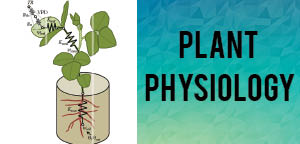
- Track 10-1Biotic and Abiotic stress in plants
- Track 10-2Photo- morphogenesis & Photo-periodism
- Track 10-3Plant hormones & Nutrition
- Track 10-4Plant Glycobiology
Plant genetics is a wide spectrum term. Plant genetics is the branch of science it deals with Heredity, mainly heredity transmission mechanisms and the inherited variations of characteristics among similar related organisms. And it deals with the day to day associated activities of the plants. Plants contain chloroplast DNA. Specifically, it deals mechanisms of hereditary transmissions & variation of inherited characteristics. Plant genetics is nothing but altering of natural transfer of genes by using genetic techniques such as genetic engineering, plant breeding, hybridization., new techniques have evolved to grow crops Plant parts are artificially cultured to produce whole plant.

- Track 11-1miRNA and RNA analysis
- Track 11-2Plant breeding methods
- Track 11-3Pathogen detection and analysis
- Track 11-4Epigenetics and DNA methylation studies
Plant biotechnology is also known as the green biotechnology and is defined as the introduction of the desirable traits in plants by the using technique genetic modification and it is used for the enhancement of agriculture and food quality. Biotechnology is mainly for improvement of varieties and for fruit ripening delay and for ornamental plants development and for biodiversity protection. Plant biotechnology is the incorporated use of biochemistry and micro biology to achieve the capabilities of microorganisms and cultured tissue cells. plant tissue culture is easiest and widely accepted biotechnology system. It entails the culture of plant leaves, roots, petioles, stems, fluorescence in artificial media under the aseptic conditions.
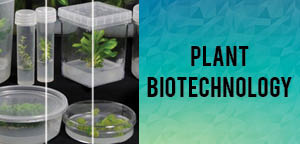
- Track 12-1Plant Genome Engineering and Plant genetic diversity
- Track 12-2Genome editing and the latest EU policies
- Track 12-3Plant Genetic Engineering and GM crops
Plant pathology is the study of the environmental conditions and the organisms that which cause diseases in plants and the effects on plant growth and controlling plant diseases methods it also deals with the microbiology and mycology, virology, etc. Plant diseases are varying from season to season, depending on the pathogen and environmental conditions controlling of plant diseases is crucial for production of food and it is achieved by the selecting desirable plants which are more resistant to many diseases and by using the pesticides. Mycology is defined as the study of fungi, and their dangers and study of fungal genetic and biochemical properties, and their uses.
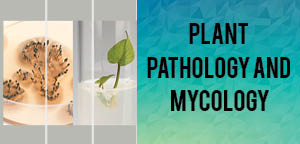
- Track 13-1Plant Environment Interaction
- Track 13-2Plant Immune Response
- Track 13-3Fungal Plant Interaction
Agriculture is the cultivation of plants for food, fuel, medicinal plants and other products useful to the human life. And it is the practicing of farming, cultivation of the soil for growing crops. the ecosystem services that are responsible for human life on this planet. Agronomy is one technology of producing plants for the food and fuel, agronomy is use-full method for creating healthier food. Natural resources are resources that exist naturally without actions of humankind. Natural resources include crops, sunlight, vegetation, water, etc. natural resources are divided in to different types. Natural resources are materials that can be used found in the environment.
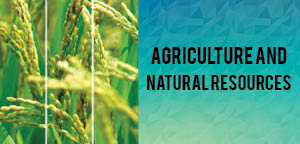
- Track 14-1Modern technologies for Vegetation
- Track 14-2Agronomy of Field Crops and Biofuel PlantS
- Track 14-3Seasons and Systems of Farming
Soil is natural resource, soil science is the study of soil and soil classification and fertility of the soil, Soil classification mainly based on soil morphology soils are distinguished by physical appearance and characteristics. Branches of soil science are pedology, Edaphology. Pedology it includes formation chemistry, morphology classification of soil and Edaphology it includes how soils interacts with living things, plants. Soil degradation is expanding all around the world, when crops are collected supplements are expelled out if they don’t supplant natural material after sometimes this decreases the soil quality thus leads to the lower water holding limit, less air, and it leads to the soil corruption.
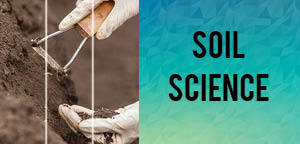
- Track 15-1Soil Morphology and soil management
- Track 15-2Soil Fertility and Soil Biochemistry Experts Meeting
- Track 15-3Plant Soil Science
Soil and water science defined as the controlling soil water content at an optimal state for all given purposes, including environmental needs. An optimal state is often a compromise between competing uses and needs to account for long term sustainability of the soil water system. Adsorption is the process by which constituents attached to the surface of the soil. Adsorption processes are governed by the organic and inorganic components properties of the soil. Substances which can be adsorbed by soil particles include soil constituents, plant nutrients, surfactants, antibiotics and toxic environmental pollutants present in soil solutions.
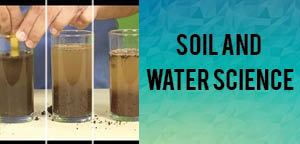
- Track 16-1Soil Salinity
- Track 16-2Soil Water Evaporation
Various viruses are detected in the soil samples. They are in different in shapes tailed, rod shaped, filamentous, and bacilli form. soil viruses are very important they influence the ecology of soil biological communities through transfer genes from host to host, viruses are major in global geochemical cycles. No significant variations in viral population structure in terms of morphology and abundance were found. Typically, there were ~ 1.1 - 1.2 x 109 virions g-1 dry weight of soil, revealing remarkable differences in virus-to-bacteria ratios in domains close to roots (~ 0.28 – 0.29) compared to bulk soil.

- Track 17-1Bacteriophage Genome
- Track 17-2Viral Diversity in Soils
Soil geography is a branch of soil science study about the patterns of soil, distribution of the soil on the earth. Soil is made up of rock particles Each component and their size, play an important role. The large particles, sand, determine aeration and drainage characteristics and the tiniest, sub-microscopic clay particles, are chemically active, binding with water and plant nutrients. The ratio of these sizes determines soil type: clay, loam, clay-loam, silt-loam.
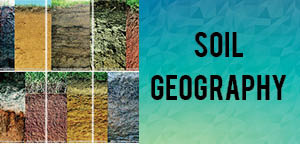
- Track 18-1Geomorphology and Soil Geography
- Track 18-2Ecological and agrochemical
Fertilizers are natural are synthetic materials applied to soils are to plant tissues to supply essential plant nutrients to the growth of the plant. Fertilizers increases the growth of plants. Mainly three macro nutrients nitrogen, phosphorous, potassium used nitrogen is used for the leaf growth phosphorous used for the development of roots, flowers, seeds, potassium used for Strong stem growth. Fertilizers are organic fertilizers, chemical fertilizer, nitrogen fertilizers, phosphate fertilizers, potassium fertilizers, compound fertilizer.
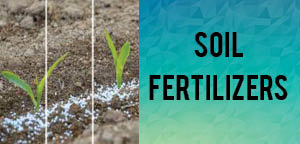
- Track 19-1Radiocarbon and Soil Carbon Dynamics
- Track 19-2Climate Change
Forest is a complex of ecosystem consisting of trees. Forestry is the science of conserving & repairing of forests to meet desired needs for human benefits. Forestry science belongs to the biological, physical sciences. Forests are nature’s power house. Disappearance of forests leads changing rainfall pattern. Forestry is important because 25 percent of the drugs are derived from the trees & industrial oils and resins, dyes are yields from the trees. Medical plants gum provided by forests. It is also widely used for medicines. They deserve much greater attention than they are getting now.

- Track 20-1Forest Resources Management
- Track 20-2Geography and Geomatics
Horticulture is the branch of agriculture deals with the cultivation of the fruits, vegetables and the ornamental plants. Horticulture mainly divided in to different branches. Promology it deals with the cultivation of the fruit crops. Olericulture it deals with the cultivation of the vegetable plants. Floriculture it deals with the cultivation of the ornamental flowers. Fruit & vegetable preservation it deals with the principles of fruit and vegetable preservation.
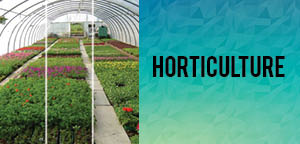
- Track 21-1Floriculture Management
- Track 21-2Turf Management